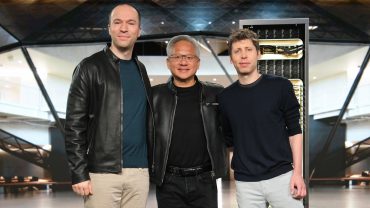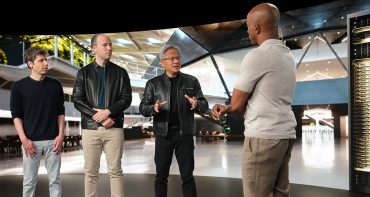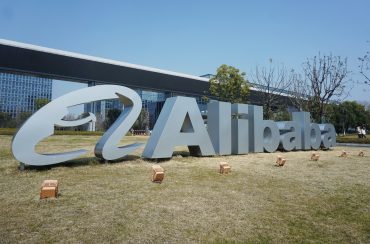
- AI
- AI Infrastructure
- AI Investment
NVIDIA and OpenAI $100B Partnership Reshapes AI Industry
5 minute read

NVIDIA and OpenAI unveil a $100B plan to build 10GW of AI infrastructure, redefining global compute, cloud economics, and the future of artificial intelligence
Key Takeaways
-
NVIDIA will invest up to $100 billion in OpenAI to build at least 10 gigawatts of dedicated AI infrastructure, beginning with a 1GW rollout on the Vera Rubin platform in 2026.
-
The deal aligns capital deployment with infrastructure milestones, giving NVIDIA non-controlling equity stakes in OpenAI while establishing it as the company’s preferred compute partner.
-
OpenAI’s valuation is estimated at $500 billion, while NVIDIA’s stock surged 4–5% on the announcement, reflecting investor confidence in long-term AI demand.
Introduction
The September 2025 announcement of NVIDIA’s partnership with OpenAI marks a turning point in the industrialization of artificial intelligence. Structured as a $100 billion progressive investment linked to infrastructure milestones, the deal aims to build out 10 gigawatts of compute power—capacity equivalent to powering millions of homes.
This is more than a supply agreement. It represents the emergence of AI infrastructure as a distinct strategic and financial category. By combining capital deployment, equity integration, and hardware–software co-optimization, the deal sets a new precedent for how AI companies secure the resources needed to pursue frontier models and superintelligence research.
Key Developments
NVIDIA’s investment will be released in tranches as new gigawatt-scale data centers come online. The first deployment, scheduled for the second half of 2026, will establish 1GW of operational capacity on the Vera Rubin platform.
In exchange for supplying GPUs and networking systems, NVIDIA will receive non-controlling equity in OpenAI, aligning financial incentives with OpenAI’s long-term success.
The agreement positions NVIDIA as OpenAI’s preferred compute partner but remains non-exclusive, allowing OpenAI to maintain relationships with Microsoft, Oracle, SoftBank, and other providers. Together, these elements create a co-evolutionary model where capital, hardware, and software innovation advance in lockstep.

Market Impact
News of the deal sent NVIDIA shares up nearly 5% in a single trading session, highlighting investor confidence in long-term demand for GPU-driven compute. According to CNBC, analysts noted that the partnership strengthens NVIDIA’s position at the center of global AI investment flows.
OpenAI, meanwhile, is now informally valued at around $500 billion, putting it among the world’s most valuable technology companies. That valuation is justified not only by product adoption but by its ability to command vast, dedicated infrastructure capacity.
The partnership also disrupts cloud computing dynamics. Historically, AI companies leaned heavily on hyperscale providers for capacity. By committing to purpose-built, NVIDIA-optimized data centers, OpenAI signals a shift toward dedicated AI infrastructure as a viable and superior alternative.
This move pressures traditional cloud players—Microsoft, Amazon, Google—to demonstrate differentiation beyond commodity compute, either through proprietary chips (TPUs, custom ASICs) or new service models.
Strategic Insights
The NVIDIA–OpenAI deal raises the competitive bar across the AI sector. Anthropic, Cohere, and other fast-growing startups will now face intensified pressure to secure their own long-term hardware supply, while incumbents like Google and Microsoft must accelerate infrastructure bets to remain competitive.
Operating 10GW of AI infrastructure could entail annual energy costs of $3–5 billion, not including cooling, maintenance, or hardware refresh cycles. For OpenAI, the path to sustainability requires revenue expansion by a factor of 5–10 over the deployment horizon. Yet the payoff is compelling: dedicated capacity reduces reliance on cloud pricing models, potentially lowering per-compute costs and enabling architectures that shared infrastructure cannot support.
The progressive investment structure balances risk between the two partners. Technology risk is shared—NVIDIA optimizing hardware efficiency, OpenAI maximizing model utilization. Market risk is distributed across phased deployments, while regulatory risk is managed through geographic diversification and compliance planning.

Expert Opinions and Data
Market analysts interpret the deal as a natural extension of NVIDIA’s dominance and OpenAI’s ambitions:
-
Equity Research Perspective: “This is not just capex; it’s vertical integration by design. NVIDIA secures a guaranteed buyer, equity upside, and privileged insight into next-generation AI workloads.”
-
Strategic Advisory View: “OpenAI is signaling independence from single-cloud reliance. At 10GW scale, it will command the type of infrastructure once reserved for national programs, not private companies.”
-
Energy Economics: Data from global power markets suggest the 10GW capacity would equal the output of multiple nuclear reactors, underscoring the importance of renewable sourcing and regulatory cooperation.
Conclusion
The NVIDIA–OpenAI partnership is a landmark in the industrialization of AI. By tying $100 billion of capital to the rollout of 10 gigawatts of compute infrastructure, the deal creates a new strategic template—where hardware, equity, and operational scale converge into an integrated model.
For NVIDIA, it cements its role as the world’s indispensable AI infrastructure provider. For OpenAI, it delivers control over the most critical resource in the race to frontier models: compute at scale. For the industry, it raises new questions about concentration, regulation, and sustainability, while simultaneously unlocking the possibility of training models beyond today’s limits.
The partnership’s success will depend on execution across technology integration, operational management, and regulatory navigation. But its significance is already clear: AI is no longer just about algorithms and applications—it is now an infrastructure business.







